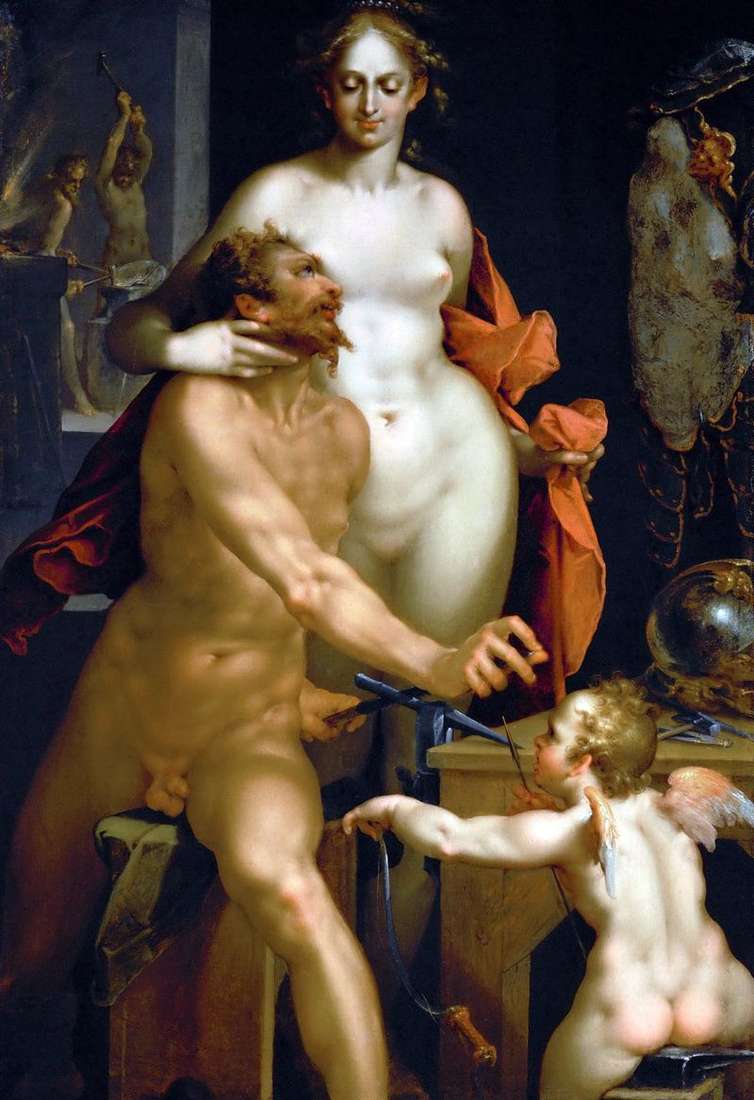
The painting “Venus and Volcano” was written by the Flemish painter Bartholomeus Spranger in Prague, finished the year before the death of the painter. The size of the picture is 140 x 95 cm, canvas, oil. The volcano, in mythology, the deity of fire and metallurgy, according to Varro, passed to the Romans from the Sabinians. The word Vulcanus does not have an indisputable etymology in Latin.
The cult of Volcano was originally associated with human sacrifices. This is indicated by the news of Varro, confirmed by other writers, that during the festivities of the volcanic people the people threw alive fish and other animals into the fire, sacrificing them instead of human souls. The myth of the son of Vulcan, the fire-breathing man Kakuse, who lived on the Aventine mountain, in a cave surrounded by the remnants of human bodies devoured by him, also indicates the anthropophagic nature of the cult.
Ancient Roman writers mention the first wife of Vulcan, calling her only – Maya, others – Maesto. Other myths, identifying Vulcan with the Greek Hephaestus, combine it with the goddess of beauty Venus. The sons of Vulcan from mortal women were worshiped by the Roman king Servius Tullius and the founder of the city of Prenesta Tsekul.
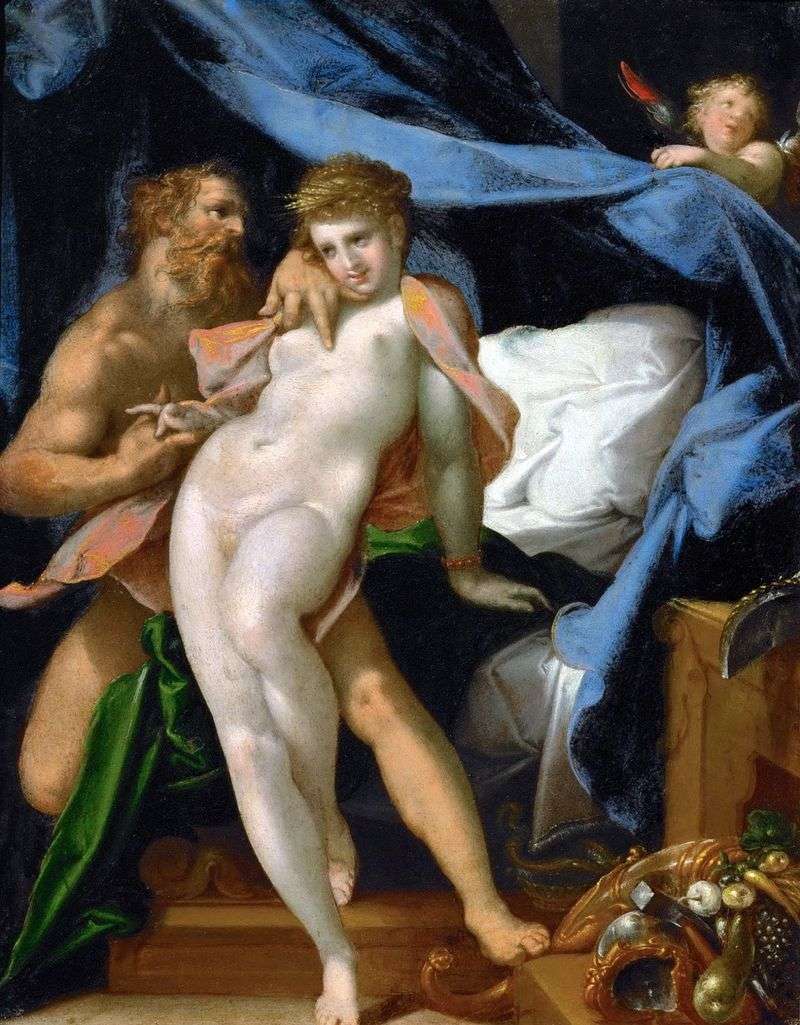 Vulcan and Maya by Bartholomeus Spranger
Vulcan and Maya by Bartholomeus Spranger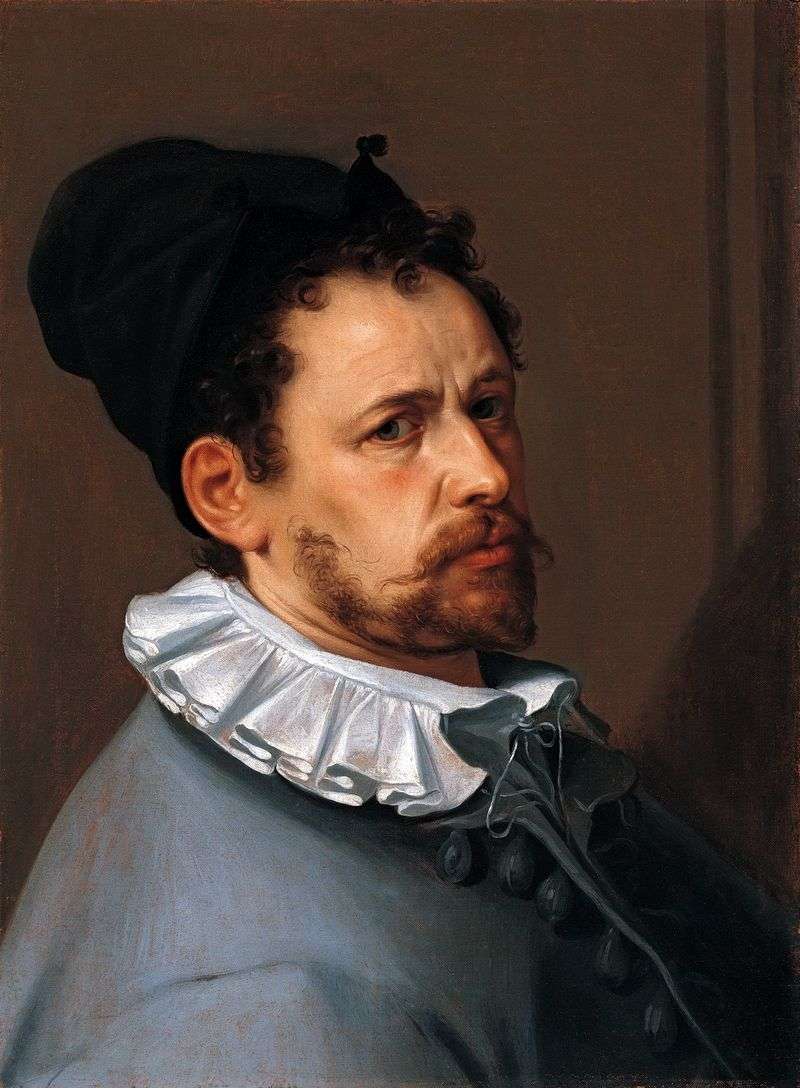 Self-portrait by Bartholomeus Spranger
Self-portrait by Bartholomeus Spranger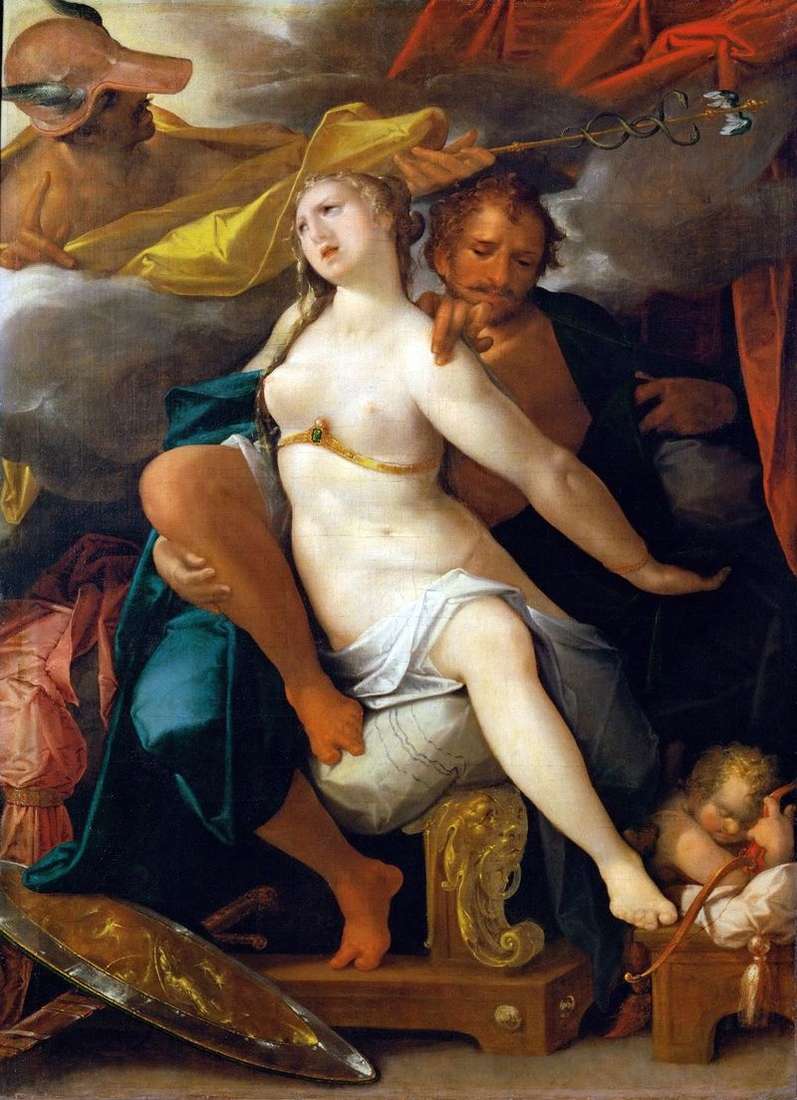 Mercury, Venus and Mars by Bartholomeus Spranger
Mercury, Venus and Mars by Bartholomeus Spranger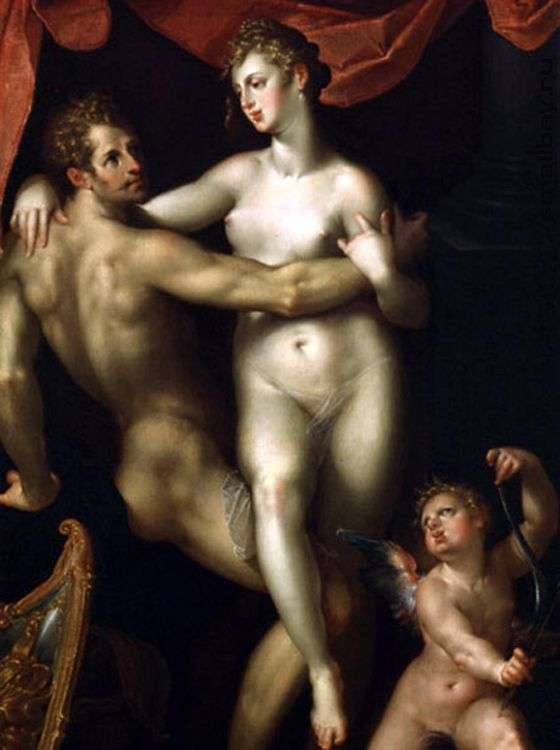 Mars, Venus and Cupid by Bartholomeus Spranger
Mars, Venus and Cupid by Bartholomeus Spranger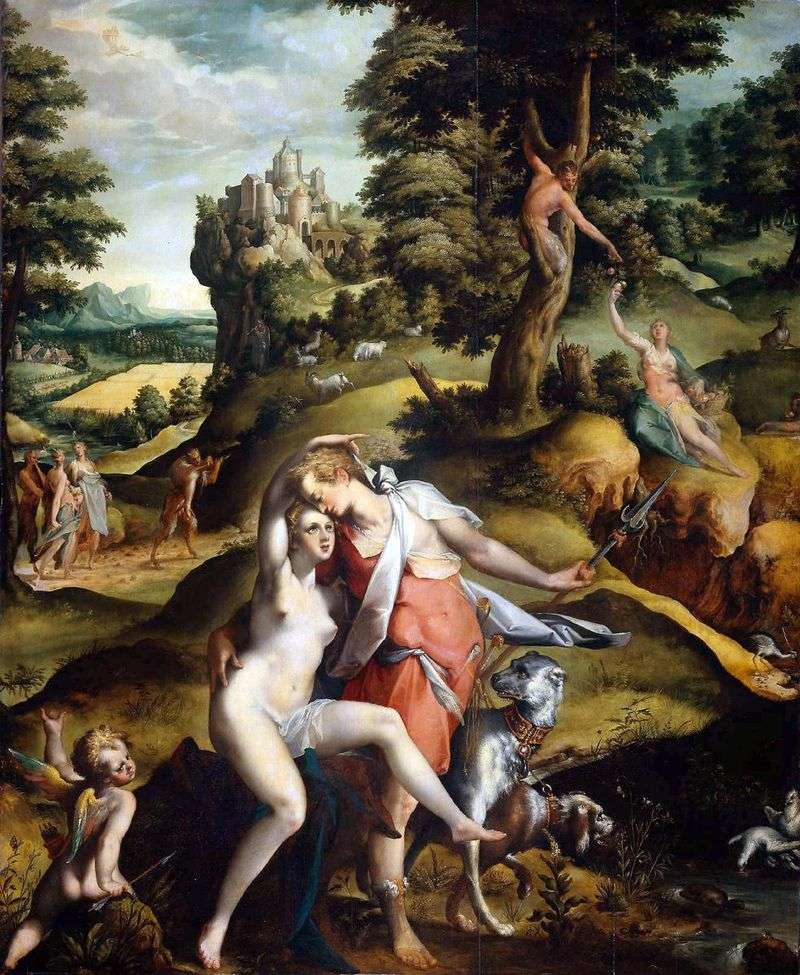 Adonis goes on a hunt by Bartholomeus Spranger
Adonis goes on a hunt by Bartholomeus Spranger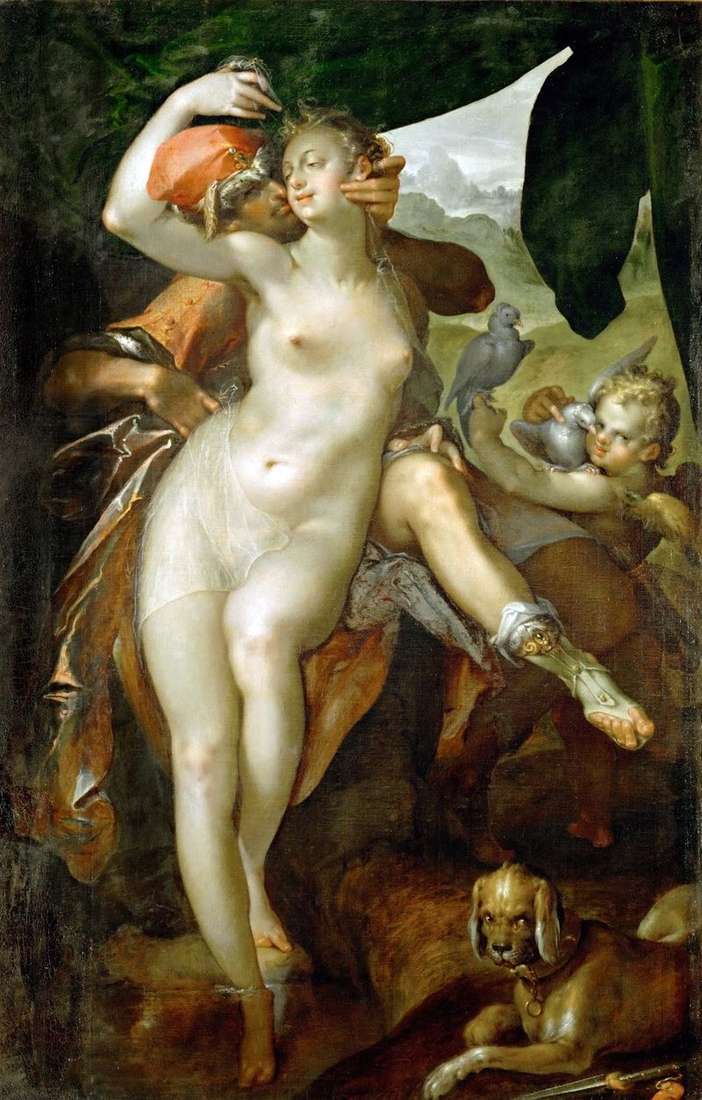 Venus and Adonis by Bartholomeus Spranger
Venus and Adonis by Bartholomeus Spranger Christ, the Savior of the World by Bartholomeus Spranger
Christ, the Savior of the World by Bartholomeus Spranger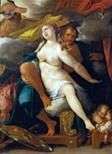 Mercurio, Venus y Marte – Bartholomeus Spranger
Mercurio, Venus y Marte – Bartholomeus Spranger